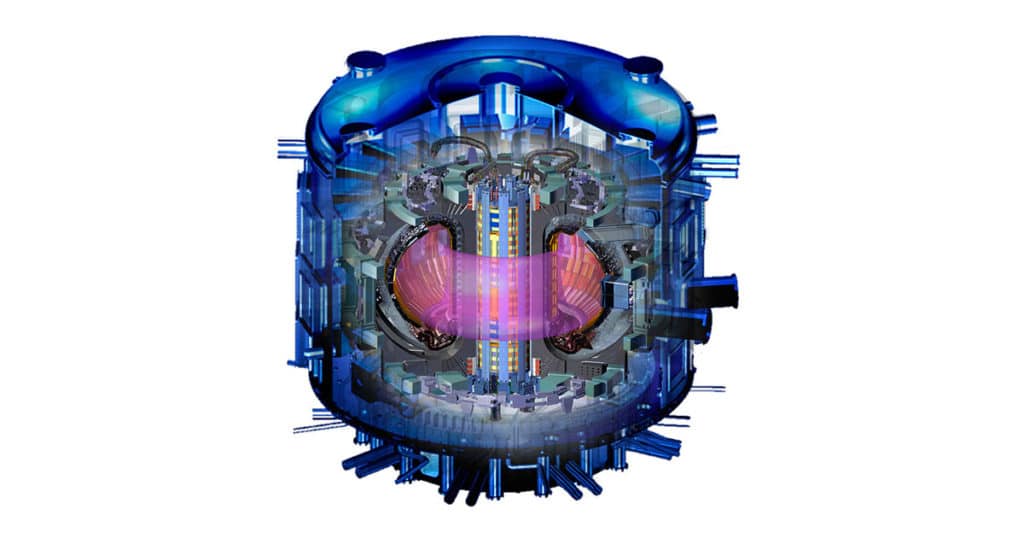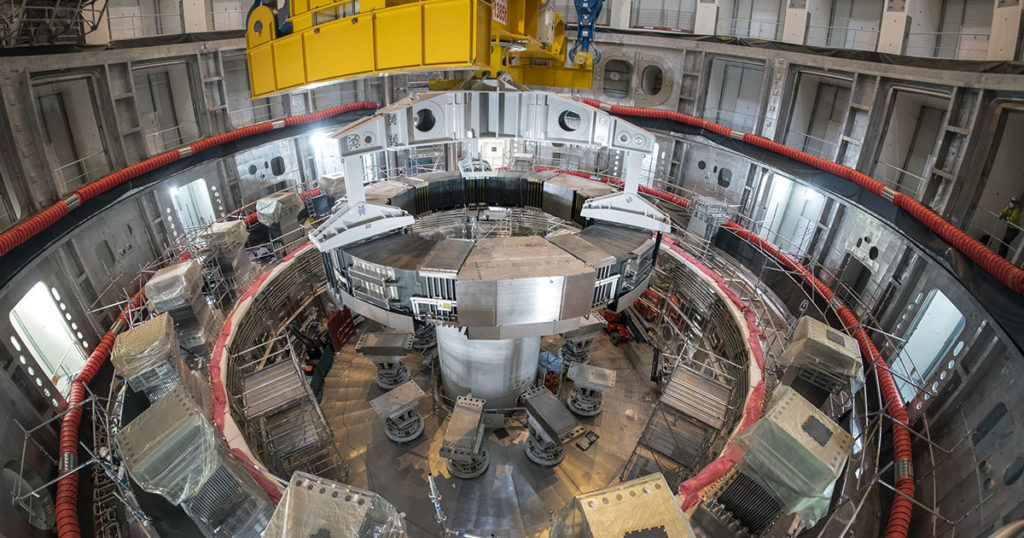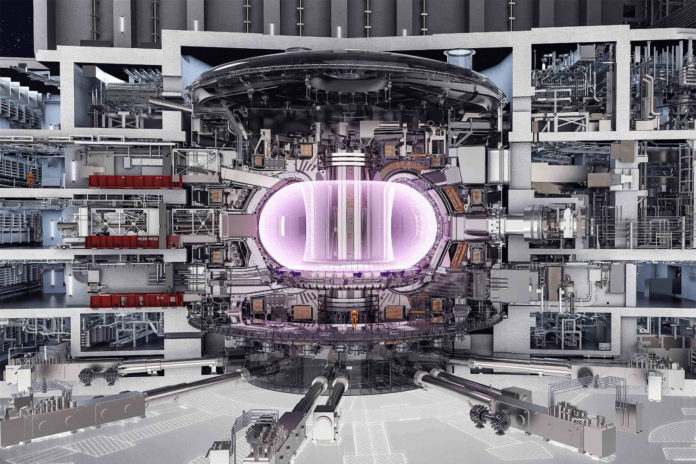General Atomics, an American energy and defense company, is ready to ship the first module of the “Central Solenoid,” the world’s most powerful magnet. It is being shipped to France for installation in the core of ITER, the experimental fusion reactor.
The project ITER is being built in southern France by 35 partner countries, including China, the E.U, India, Japan, Korea, Russia, and the U.S. It is hoped that ITER will prove the feasibility of fusion power as a large-scale, safe, and carbon-free source of energy based on the same principle that powers our Sun and stars. Despite the challenges of COVID-19, ITER is almost 75% built.
Creating the magnetic cage that will shape and control the ITER fusion plasma calls for three primary magnet arrays: the D-shaped vertical array of “toroidal field coils,” the horizontal layer of ring-shaped “poloidal field coils,” and the Central Solenoid positioned in the central axis.

The Central Solenoid, the largest of ITER’s magnets, will be 18 meters (59 feet) tall, 4.25 meters (14 feet) wide, and weigh thousand tons once fully assembled. The unique role of this most powerful magnet is to direct a pulse of current in the plasma that circulates around the torus, helping to shape and control the fusion reaction during long pulses. It is sometimes called the “beating heart” of the ITER machine.
Its magnetic force is powerful enough to lift an aircraft carrier 6 feet (2 meters) into the air. With a magnetic field strength of 13 Tesla at its core, it will be about 280,000 times stronger than the earth’s magnetic field. Because of this, the support structures for the Central Solenoid will have to withstand forces equal to twice the thrust of a space shuttle lift-off.
The Central Solenoid will be made up of six modules. Each module required more than two years of precision fabrication, carefully winding more than 5 kilometers of the steel-jacketed niobium-tin superconducting cable into precise flat discs, then splicing together enough discs to create the full module. Finally, the module is enclosed in a mold, and 3,800 liters (1,000 gallons) of epoxy resin are injected under a vacuum to saturate the insulation materials and prevent bubbles or voids.

General Atomics completed the final testing of the first Central Solenoid module earlier this year. And now, freshly wrapped for travel over land and sea, Module 1 is heading off to take its place as the first of its kind at ITER. Five additional Central Solenoid modules, plus one spare, are at various stages of fabrication – all of them to be installed in 2023-2024. And not so long after that, ITER’s scientists will stand by anxiously as their colossal newborn generates its first heartbeat.
“Delivery of the first ITER Central Solenoid module is an exciting milestone for the demonstration of fusion energy and also a terrific achievement of U.S. capacity to build very large, high-field, high-energy superconducting magnets,” says Dr. Michael Mauel of Columbia University. “GA’s success in building, testing, and delivering high-field superconducting magnets for fusion energy is a high-tech breakthrough for the U.S. and gives confidence in realizing fusion power in the future.“
ITER will be the first fusion device to produce net energy across the plasma, meaning the fusion reaction will generate more thermal energy than the energy required to heat the plasma. ITER will also be the first fusion device to maintain fusion for long periods of time. ITER will generate 500 megawatts of thermal fusion power, more than thirty times the current record achieved on the JET tokamak in the U.K.
Though ITER will not generate electricity, it will be a critical testbed for the integrated technologies, materials, and physics regimes necessary for the commercial production of fusion-based electricity. The lessons learned at ITER will be used to design the first generation of commercial fusion power plants.
The Central Solenoid will play a critical role in ITER’s mission to establish fusion energy as a practical, safe and inexhaustible source of clean, abundant, and carbon-free electricity.
